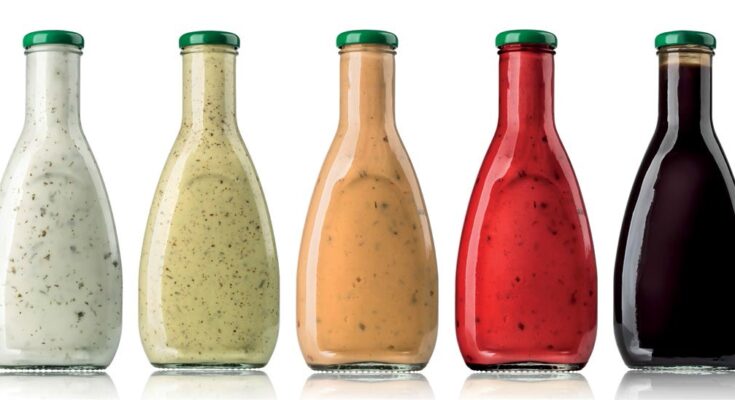India Food Emulsifiers Market has valued at USD3.64 million in 2022 and is anticipated to project robust growth in the forecast period with a CAGR of 6.24% through 2028. India Food Emulsifiers Market is anticipated to grow significantly rate in the projected period of 2028. The emulsifiers market in India has been witnessing substantial growth in recent years. Emulsifiers play a vital role in various industries, including food and beverages, cosmetics, pharmaceuticals, and personal care products. They are used to stabilize emulsions, enhance texture, improve shelf life, and provide other desirable properties to products. The Indian emulsifiers market has seen a surge in demand due to factors such as changing lifestyles, increasing disposable incomes, urbanization, and the growing awareness of health and wellness among consumers.
Key Market Drivers
Growing Usage in Food and Beverage Industry is Propelling the Market
Emulsifiers are substances that help stabilize and blend two immiscible components, typically oil and water, to form a stable emulsion. Emulsifiers act as binding agents, ensuring that oil and water stay blended for an extended period. One of the primary functions of emulsifiers in the food and beverage industry is to enhance texture and stability. In products such as mayonnaise, sauces, and salad dressings, emulsifiers help achieve a smooth and creamy texture by preventing oil and water from separating. They impart a desirable mouthfeel and prevent the formation of unappetizing clumps or lumps. Moreover, emulsifiers improve the stability of emulsions, ensuring that the product maintains its consistency over time, even during storage. As per the India Brand Equity Foundation (IBEF), India’s food and beverage industry currently stands at USD 40.3 billion and is expected to touch USD 66.3 billion by 2018, registering a growth rate of 18 percent. Furthermore, Emulsifiers play a crucial role in extending the shelf life of various food and beverage products. By maintaining the stability of emulsions, emulsifiers prevent spoilage, microbial growth, and rancidity. They create a protective barrier around the dispersed oil droplets, preventing oxidation and maintaining the freshness of the product. This is particularly important in baked goods, margarines, and confectionery, where extended shelf life is essential for consumer satisfaction and reduced food waste. They also contribute to the development of low-fat and reduced-calorie food products. They enable the incorporation of water or other low-fat ingredients into formulations, mimicking the texture and mouthfeel typically provided by higher fat content.
Emulsifiers create stable emulsions with reduced fat content, allowing manufacturers to offer healthier alternatives without compromising taste and sensory attributes. Reduced-fat spreads, light salad dressings, and low-calorie beverages are examples of products benefiting from emulsifiers’ fat reduction capabilities. In addition to emulsion stabilization, emulsifiers also function as texture modifiers and structure builders. They influence the formation of foams, gels, and aeration processes in various food applications. For example, emulsifiers contribute to the stable foam structure in whipped creams, mousses, and meringues, enhancing the visual appeal and mouthfeel of these products. As per the India Brand Equity Foundation (IBEF), The market size of India’s beauty, cosmetic and grooming market will reach $ 20 billion by 2025 from the current $ 6.5 billion on the back of rise in disposable income of middle class and growing aspirations of people to live good life and look good, according to Assocham. To suit consumption across difference levels of purchasing power, FMCG companies are coming out with variety of products in different price range. They also play a role in cake batters, contributing to their structure and moisture retention during baking. Emulsifiers find applications in a diverse range of food and beverage products. They are used in dairy products such as ice creams, yogurts, and processed cheeses to create smooth textures and prevent ice crystal formation. In bakery products, emulsifiers improve dough stability, volume, and shelf life. Chocolate and confectionery items rely on emulsifiers for homogenous mixing, smoothness, and prevention of fat bloom. Furthermore, emulsifiers are used in meat products, beverages, soups, and ready-to-eat meals, among others, to enhance stability, texture, and sensory attributes.
Increased Consumption of Emulsifiers Based Products is Spurring the demand of Overall Market
Emulsifiers ensure the stability of cosmetic products by forming a protective layer around oil droplets, preventing coalescence, and slowing down creaming or sedimentation. This ensures that the product remains homogeneous throughout its shelf life. Emulsifiers play a significant role in determining the texture and sensory attributes of cosmetic products. By carefully selecting and formulating with emulsifiers, manufacturers can create a range of luxurious textures, from light and silky to rich and creamy, enhancing the user’s experience. They can also improve the efficacy of cosmetic formulations by enabling the incorporation of active ingredients that are incompatible with the base formula. They help to solubilize hydrophobic actives, such as vitamins, antioxidants, and plant extracts, allowing their effective delivery to the skin. Moreover, with the growing demand for natural and sustainable cosmetic products, natural emulsifiers have gained popularity. Examples include lecithin, beeswax, and plant-derived emulsifiers like cetearyl olivate and sorbitan olivate. Also, Silicone-based emulsifiers offer unique sensory characteristics and are commonly used in skincare and haircare products. They provide a smooth, silky feel and can enhance the spread ability and delivery of active ingredients. Polymeric emulsifiers, such as carbomer and acrylates copolymer, provide exceptional stability and are often used in high-viscosity products like creams and gels.
Download FREE Sample Report @ https://www.techsciresearch.com/sample-report.aspx?cid=3002
Key Market Challenges
Fluctuations in Prices of Raw Materials
Raw materials used in food emulsifiers are primarily sourced from natural origins, including vegetable oils, fats, and proteins. The prices of these materials are susceptible to market volatility, influenced by factors like climate change, geopolitical events, and global supply and demand shifts. Fluctuations in raw material prices can be substantial and unpredictable, resulting in a series of challenges for the Indian food emulsifiers market. Significant price fluctuations can disrupt the supply chain, resulting in production and distribution delays. Manufacturers may encounter challenges in procuring reliable and cost-effective raw materials, impacting their capacity to meet market demand and fulfill customer expectations. Moreover, uncertainty in prices of raw materials can impede research and development endeavors. Manufacturers may exhibit reluctance in investing in cutting-edge formulations or novel product development owing to the uncertainty surrounding future costs.
Disruptions in Supply Chain
Efficient logistics and transportation play a critical role in ensuring the timely delivery of emulsifiers to food manufacturers. Challenges such as poor infrastructure, traffic congestion, and insufficient cold chain facilities can result in delays and compromise product quality, impacting both manufacturers and consumers alike. The food industry is governed by rigorous regulations aimed at safeguarding consumer safety. Alterations in labeling requirements, quality standards, or import/export regulations can have an impact on the cross-border movement of emulsifiers, resulting in bottlenecks in the supply chain. Furthermore, the COVID-19 pandemic unveiled vulnerabilities in global supply chains. The implementation of lockdowns, restrictions, and disruptions in international trade underscored the imperative for resilient supply chain management to guarantee the uninterrupted flow of essential ingredients.
Key Market Trends
Stringent Regulatory Landscape
In recent years, there has been a discernible shift in consumer preferences towards cleaner and more natural ingredients. This trend has prompted regulatory bodies to closely examine the use of artificial additives, such as emulsifiers, in food products. The Food Safety and Standards Authority of India (FSSAI) has taken a leading role in ensuring that emulsifiers used in Indian food products adhere to safety standards and are accurately labeled. Regulatory authorities in India have been proactive in enhancing labeling requirements for food products, including emulsifiers. Regulatory agencies are placing a strong emphasis on ensuring that food emulsifiers meet rigorous safety and quality standards. This growing trend incentivizes manufacturers to implement best practices in production, storage, and distribution, guaranteeing the safety of emulsifiers throughout their shelf life. In a world that is becoming more interconnected, it is essential for trade and export opportunities to align with international food standards. Regulatory authorities in India are diligently working towards harmonizing their regulations with global benchmarks. This approach enables emulsifier manufacturers to access international markets while upholding the utmost commitment to stringent quality and safety criteria.
Sustainability and Environmental Concerns
Sustainable practices encompass a strong emphasis on waste reduction. Emulsifier manufacturers are actively investigating strategies to minimize packaging waste and integrate circular economy principles, including recycling and upcycling, into their operational frameworks. Water scarcity is a pressing global issue, and the food industry plays a significant role in water consumption. Companies operating in the food emulsifiers market are actively adopting water-efficient technologies and practices to minimize their water usage and contribute to water conservation efforts. Furthermore, an emerging trend observed in the food industry, particularly within the emulsifiers sector, is the heightened focus on ethically sourced ingredients. Companies are progressively scrutinizing their supply chains to guarantee responsible sourcing of raw materials, thereby avoiding any involvement in deforestation, habitat destruction, or unethical labor practices.
Segmental Insights
Type Insights
In 2022, the food emulsifiers market was dominated by the lecithin and is predicted to continue expanding over the coming years. Lecithin is a naturally derived emulsifier that can be sourced from plants like soybeans and sunflower seeds, as well as animal products like egg yolks. In today’s market, where consumers are increasingly seeking natural and clean label ingredients, lecithin emerges as a prominent choice that is recognizable and well-received by consumers. It perfectly aligns with the escalating demand for transparent and minimally processed products. Lecithin’s exceptional emulsification properties make it a versatile ingredient in a wide range of food applications. It helps stabilize oil-water mixtures, preventing separation and ensuring uniform texture and mouthfeel. This versatility allows manufacturers to use lecithin in products such as baked goods, confectionery, dairy, beverages, and processed foods. Moreover, lecithin’s emulsification properties also play a crucial role in extending the shelf life of food products. By preventing the separation of ingredients, lecithin helps maintain the quality and freshness of products over an extended period.
Related Reports
United States Pyridine and Pyridine Derivatives Market [2028] – Analysis, Trends, & Insights
France Pyridine & Pyridine Derivatives Market [2028] – Trends, Share & Forecast
UAE Pyridine & Pyridine Derivatives Market [2028]: Analysis & Forecast
Table of Content- India Food Emulsifiers Market
- Product Overview
- Research Methodology
- Executive Summary
- Impact of COVID-19 on India Food Emulsifiers Market
- Voice of Customer
- India Food Emulsifiers Market Outlook
6.1. Market Size & Forecast
6.1.1. By Value & Volume
6.2. Market Share & Forecast
6.2.1. By Type (Lecithin, Mono- & Diglycerides and Derivatives and Others)
6.2.2. By Source (Plant Source and Animal Source)
6.2.3. By Functionality (Emulsification, Starch Complexing, Protein Interaction and Others)
6.2.4. By Application (Bakery Products, Confectionery, Convenience Foods, Dairy Products and Others)
6.2.5. By Region
6.2.6. By Company (2022)
6.3. Market Map
- North India Food Emulsifiers Market Outlook
7.1. Market Size & Forecast
7.1.1. By Value & Volume
7.2. Market Share & Forecast
7.2.1. By Type
7.2.2. By Source
7.2.3. By Functionality
7.2.4. By Application
- South India Food Emulsifiers Market Outlook
8.1. Market Size & Forecast
8.1.1. By Value & Volume
8.2. Market Share & Forecast
8.2.1. By Type
8.2.2. By Source
8.2.3. By Functionality
8.2.4. By Application
- West India Food Emulsifiers Market Outlook
9.1. Market Size & Forecast
9.1.1. By Value & Volume
9.2. Market Share & Forecast
9.2.1. By Type
9.2.2. By Source
9.2.3. By Functionality
9.2.4. By Application
- East India Food Emulsifiers Market Outlook
10.1. Market Size & Forecast
10.1.1. By Value & Volume
10.2. Market Share & Forecast
10.2.1. By Type
10.2.2. By Source
10.2.3. By Functionality
10.2.4. By Application
- Market Dynamics
11.1. Drivers
11.2. Challenges
- Market Trends & Developments
- Pricing Analysis
- Policy & Regulatory Landscape
- India Economic Profile
- Competitive Landscape
16.1. ADM Agro Industries India Private Limited
16.2. Ingredion India Pvt. Ltd.
16.3. KERRY INGREDIENTS INDIA PRIVATE LIMITED
16.4. AAK India Private Limited
16.5. Puratos India
16.6. DSM India Private Limited
16.7. Cargill India Pvt. Ltd.
16.8. Corbion India Pvt Ltd
16.9. BASF India Ltd
16.10. SAVANNAH SURFACTANTS LIMITED



